Juggling multiple tasks, keeping track of progress, and ensuring timely delivery can be a daunting task. Using templates can help you streamline these responsibilities, making them more manageable and less time-consuming.
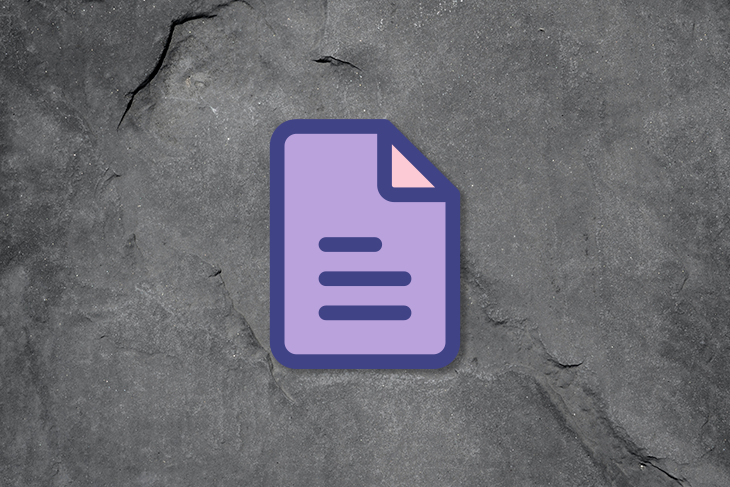
Incorporating templates into your work should be a standard practice for every project or product manager. Using templates for everyday project management tasks can help you achieve:
With the right set of templates and knowledge on how to use them, anyone can become an effective project manager.
The following nine project management templates are tailor-made for both project managers and product managers who oversee the delivery and execution of multiple projects in their daily work. These tools will not only help you stay organized but also enhance your productivity, enabling you to focus on the strategic aspects of your role.
Whether you’re overseeing a single project or managing a portfolio of products, these templates will provide the structure and clarity needed to drive your projects from inception to successful completion:
All project management templates are available in Google Sheets. Please select File > Make a copy before making edits to the spreadsheet.
You can also download the entire workbook in Excel (.xlsx) format.
Project management, in many ways, is about managing risks. These include primary risks, such as not meeting deadlines, not delivering within scope, and exceeding budget. There are also smaller risks that contribute to these primary ones, such as integration issues.
A risk register helps you track and address these risks by providing a structured approach and serving as a tangible reminder of potential issues.
Access a free risk register template in Google Docs or download the entire project management workbook in Excel.
The risk register template looks like this:
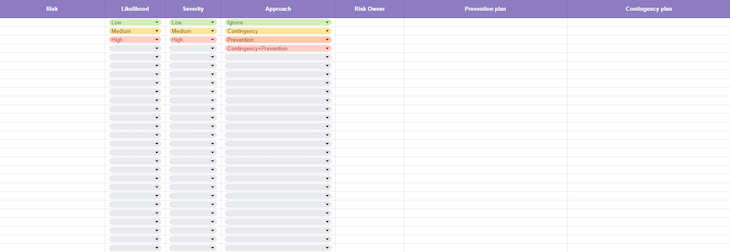
This template includes seven columns:
Navigating the fine line between overcommunication and undercommunication can be challenging. Additionally, communication is prone to errors. For instance, you might forget to communicate something or your message may not be read by the recipient.
A communication plan can help mitigate these issues. It provides a tangible tool that you can use to refine your communication approach and regularly check if anything has been overlooked.
Access a free communication plan template in Google Sheets or download the entire project management workbook in Excel.
The communication plan template looks like this:

For an effective communication plan, you need to define five key elements:
Recording all major decisions is vital.
A decision log provides evidence in case someone tries to blame you for decisions made by others (which, let’s face it, happens from time to time). It also makes it easier to trace back decisions and understand the context behind them.
As time goes on, we tend to forget why we made certain decisions in the past. However, this knowledge can often prove important.
Access a free decision log template in Google Sheets or download the entire project management workbook in Excel.
The decision log template looks like this:
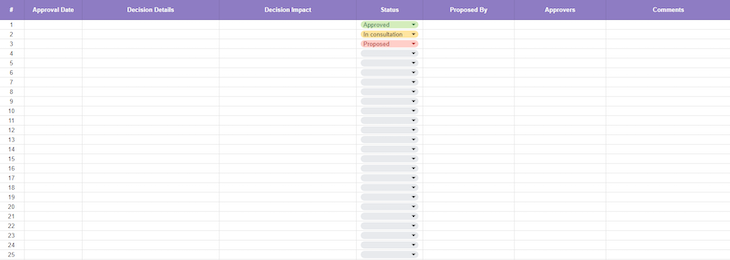
When logging decisions, keep these key points in mind:
Most project managers are familiar with Gantt charts, so I’ll skip a lengthy introduction.
In short, we sometimes need a detailed timeline-based plan — especially when working with multiple dependencies — and Gantt charts are perfect for that purpose.
Access our free Gantt chart template in Google Sheets or download the entire project management workbook in Excel.
The Gantt chart template looks like this:

My structure for the Gantt chart includes:
When we’re overwhelmed with tasks, prioritizing becomes critical. The Eisenhower matrix can help you delegate, postpone, and eliminate non-critical tasks by evaluating them based on their importance and urgency.
Access a free Eisenhower matrix template in Google Sheets or download the entire project management workbook in Excel.
The Eisenhower matrix template looks like this:
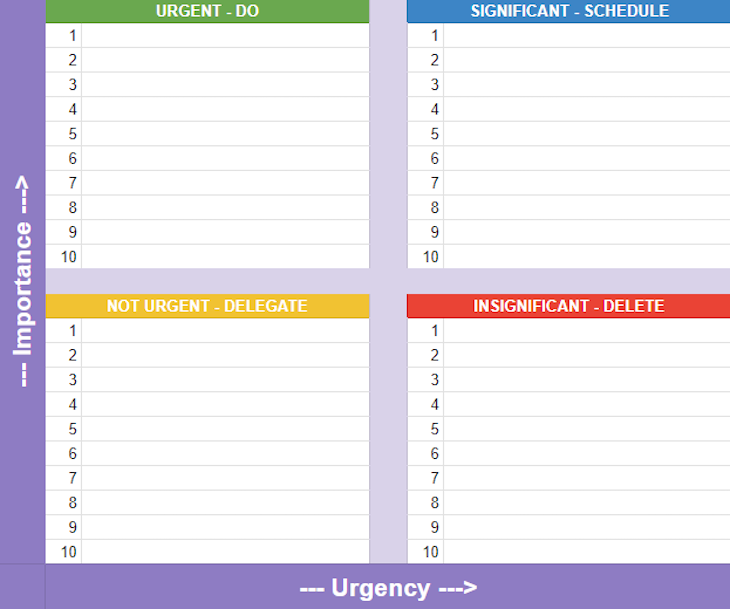
To use this tool, assess each of your tasks for urgency and importance. Then categorize them as follows:
Managing responsibilities and areas of ownership is crucial, particularly when working with numerous stakeholders. The RICE framework helps prevent miscommunication, confusion, and blame games by clearly defining who is responsible and accountable for a given task or area. It also outlines who should be consulted or informed when decisions are made.
Access a free RICE framework template in Google Sheets or download the entire project management workbook in Excel.
The RICE template looks like this:
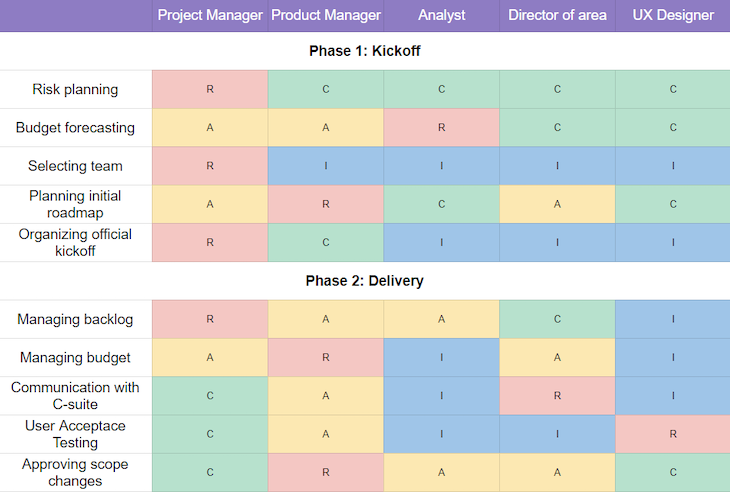
This template consists of four elements:
Gap analysis is an approach aimed at improvement that involves defining the current state and desired state, identifying the gap between them, and creating a plan to bridge this gap.
It has various applications. For instance, it can be used as a roadmap planning tool (defining gaps in products/features) or as a process improvement tool (identifying gaps in current processes).
Access a free gap analysis template in Google Sheets or download the entire project management workbook in Excel.
The gap analysis template looks like this:
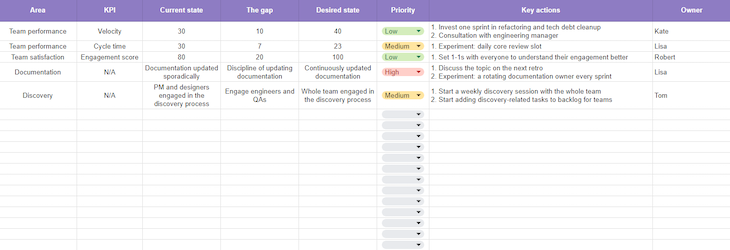
As shown in the example provided, some improvements can be easily measured with quantifiable current and desired states. In other cases where defining a KPI may be difficult, I’ve used more qualitative descriptions of current and desired states. Use whichever approach makes most sense in your context.
We’ve all experienced meetings that yield no results—essentially wasting everyone’s time. Planning a clear agenda upfront can help optimize your meetings by identifying which ones are unnecessary.
An effective meeting agenda also ensures that your meeting stays efficient and focused.
Access a free meeting agenda template in Google Sheets or download the entire project management workbook in Excel.
The meeting agenda template looks like this:

Checklists are invaluable. They prevent tasks from being overlooked, ensure you don’t take shortcuts, and provide a tool for refining your processes over time. They’re also an excellent training resource for new team members.
I have a checklist for everything I do. Even though I’ve memorized most of them, reviewing them occasionally helps me identify where I might be cutting corners and forces me to consider whether that’s the right approach.
Access a free checklist template in Google Sheets or download the entire project management workbook in Excel.
The checklist template looks like this:
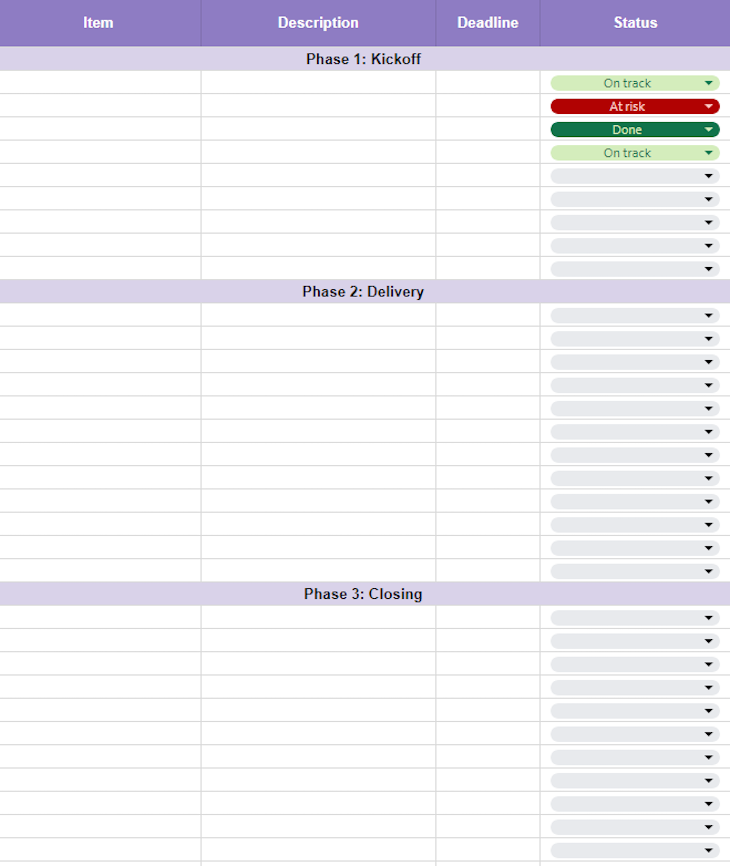
Templates simplify our lives and add predictability. They also ensure that nothing falls through the cracks amid daily challenges and chaos.
I strongly recommend incorporating project management templates into your daily work routine. By creating templates for most of your typical activities, you’ll free up time and energy to tackle larger challenges without compromising the quality of your work.
While this article provides plenty of templates as starting points, remember that these are subjective. As you discover what works best for you, feel free to modify these templates by adding or removing elements to suit your needs.
Ultimately, they’re just tools, not prescriptive instructions on how to manage projects.
LogRocket identifies friction points in the user experience so you can make informed decisions about product and design changes that must happen to hit your goals.
With LogRocket, you can understand the scope of the issues affecting your product and prioritize the changes that need to be made. LogRocket simplifies workflows by allowing Engineering, Product, UX, and Design teams to work from the same data as you, eliminating any confusion about what needs to be done.
Get your teams on the same page — try LogRocket today.
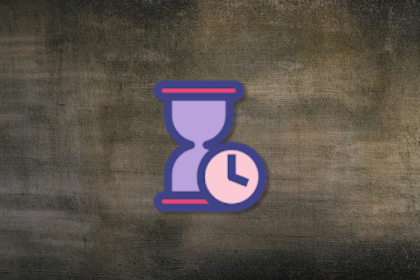
Guard your focus, not just your time. Learn tactics to protect attention, cut noise, and do deep work that actually moves the roadmap.

Rumana Hafesjee talks about the evolving role of the product executive in today’s “great hesitation,” explores reinventing yourself as a leader, the benefits of fractional leadership, and more.

Trey Courtney talks about his process for evaluating partnerships or acquisitions and how he successfully implements these initiatives.

Asma Syeda shares the importance of responsible AI and best practices for companies to ensure their AI technology remains ethical.